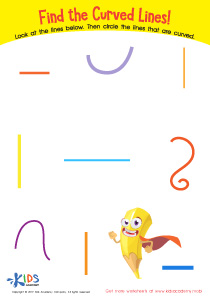Missing Letters Worksheets for Ages 5-6
6 filtered results
-
From - To
Introducing our captivating "Missing Letters Worksheets" tailored specifically for children ages 5-6! Designed to ignite the joy of learning, these worksheets are a brilliant tool to enhance your child's literacy skills. Through engaging exercises, children will discover the fun in filling in the missing letters, effortlessly improving their alphabet knowledge and spelling abilities. Perfect for young learners, our worksheets provide just the right level of challenge to foster confidence and academic growth. Dive into our collection and watch your child embark on a delightful journey of letters and words, laying the foundation for a lifetime love of reading and writing.


Missing Digraph: Part 2 Worksheet


Missing Digraph: Part 1 Worksheet


Pick the Letter Worksheet


Missing Letter Worksheet


Which Letter Should you Choose? Worksheet


Missing Letters Worksheet
Missing Letters worksheets are a critical tool in the foundational years of learning, particularly for ages 5-6. These engaging exercises are designed to sharpen young minds, helping children at this pivotal stage to recognize and understand the alphabet in a more comprehensive way. For ages 5-6, recognizing patterns and understanding the order of letters are crucial steps towards literacy.
Firstly, Missing Letters worksheets encourage problem-solving and analytical thinking. Children must discern patterns and identify which letters are absent, promoting critical thinking skills that are essential across all areas of learning. Moreover, these worksheets enhance letter recognition. As children fill in the missing pieces, they become more familiar with the shapes and sounds of letters, building a solid foundation for reading and writing.
Secondly, these worksheets offer a fun and interactive way for children to engage with the alphabet. By transforming learning into a puzzle-solving activity, children are more likely to stay motivated and interested. This positive association with learning can foster a lifelong love for reading and education.
Furthermore, Missing Letters worksheets for ages 5-6 support the development of fine motor skills. Writing in the letters requires control and precision, preparing children for future handwriting tasks.
In conclusion, Missing Letters worksheets are a valuable resource for developing literacy, analytical thinking, and motor skills in young learners. By incorporating these exercises into a child's learning routine, we can support their journey towards becoming proficient readers and writers.

 Assign to My Students
Assign to My Students














